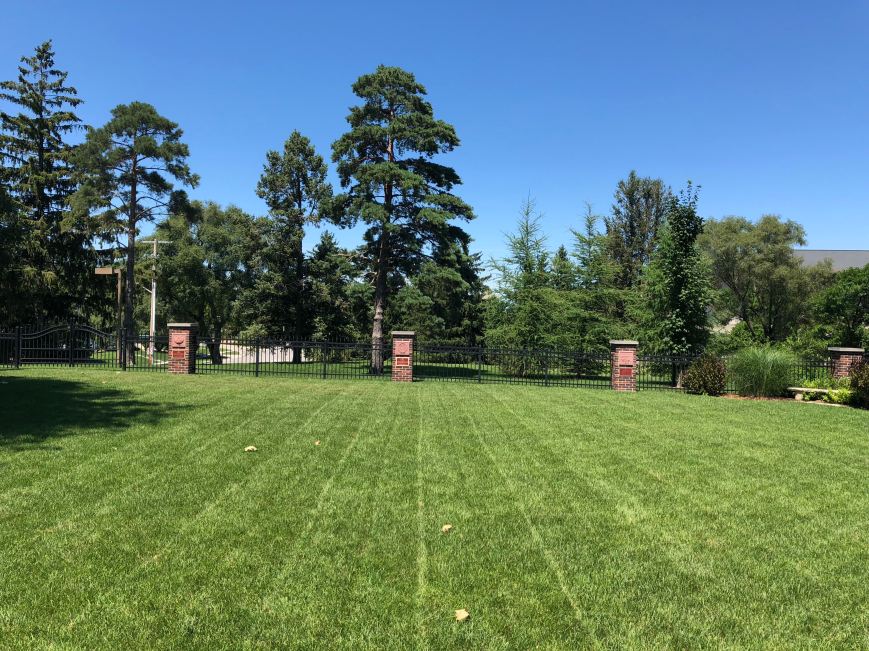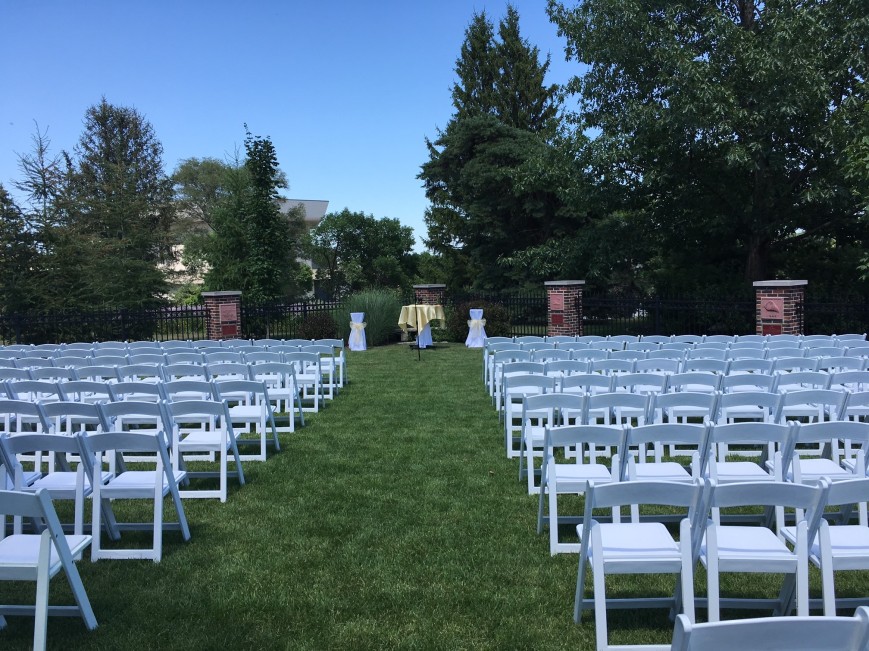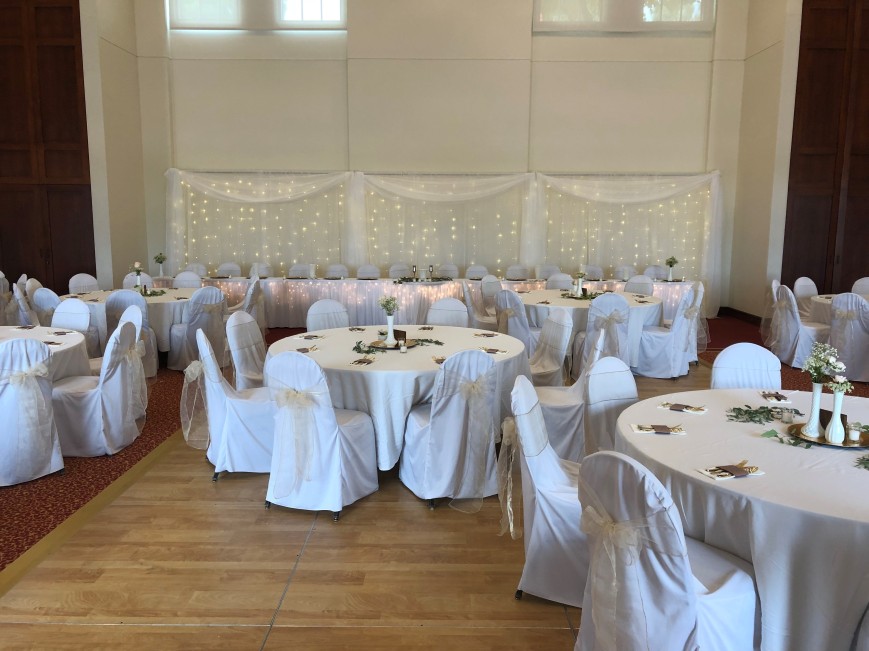
From VISIONS magazine, summer 2018
By Carole Gieseke
A Conversation with Mary Skopec
 Mary Skopec, executive director of Iowa Lakeside Laboratory, is a native Iowan. She grew up in Cedar Rapids and received three degrees from the University of Iowa (BS and MS in geography and an interdisciplinary PhD in environmental science). She worked as a supervisor for water quality monitoring for the state of Iowa through the Department of Natural Resources and has taught environmental science classes at the University of Iowa.
Mary Skopec, executive director of Iowa Lakeside Laboratory, is a native Iowan. She grew up in Cedar Rapids and received three degrees from the University of Iowa (BS and MS in geography and an interdisciplinary PhD in environmental science). She worked as a supervisor for water quality monitoring for the state of Iowa through the Department of Natural Resources and has taught environmental science classes at the University of Iowa.
What’s indispensable about Iowa Lakeside Lab?
I think the main thing about this place is that it’s this total immersion learning environment. So, when we look at nature, when we think about the complex environmental issues that we’re facing today, oftentimes we try to reduce them to their bits and their pieces. And the thing about being in Lakeside is you can’t do that. You have to think about it in all its complexity, all at the same time. I think that’s really indispensable, because I think it’s really hard to approach these complex global and regional problems without being able to think big. Lakeside gives students the ability to do that.
And you can’t escape it. From sitting in the dining hall having conversations with faculty and students about what they saw that particular day – and just the fact that you have to deal with those issues as you’re out sampling or you’re trying to catch that animal – it just engulfs you. And I think that’s really valuable in a small setting, so you’re getting this incredible faculty interaction. Lakeside provides this really high-quality, in-depth mentorship. It’s almost like an internship at the same time that students are taking the class. It’s different than just reading the material and listening to a lecture. It’s experiencing, it’s having conversations with faculty the entire time you’re here, and I think that’s kind of stripping it back to how education used to be. You can’t hide from your professor here!
How important is the multi-disciplinary aspect of this place?
I think it’s critical. When I look at where the interesting things are happening in research, it happens in the seams, where geology and biology intersect. I think that as the disciplines have matured, where those things come together – that interdisciplinary nexus – is where the greatest explosion in knowledge is happening. Because suddenly we’re seeing those feedback loops, and we’re thinking more holistically about these things that obviously do interact in nature. They don’t live in their own little discipline.
The other thing I think that’s really great about Lakeside is there aren’t very many places in Iowa where you can go and have a high-quality lake, lakes that are struggling in terms of water quality, prairie, upland grassland areas, wetlands, forested areas, savanna. I don’t know if there’s any place in Iowa where you have that diversity of habitats all in one location.
The scientific and academic communities probably understand the importance of this place, but why should the average Iowan care?
I always tell people that this is their legacy. This is Iowa’s natural heritage in a nutshell. If you think about understanding where we’ve come from and where we’re going, Lakeside and the Okoboji region and Dickinson County really encapsulate that. Because we’ve modified our landscape so intensely in the state of Iowa, this is really a glimpse back into our coveted natural heritage, I think. And if you want to see Iowa in all its glory, it’s here. That’s not to take away from other places in Iowa. I grew up in eastern Iowa and there are some phenomenal places, but glacial landscapes, wetlands, lake landscapes, it’s all right here, and I think that, again, that’s your heritage. If you’re from the Grand Canyon area, that’s really showy, but this is OUR heritage. People should care about that because it is inherently Iowan; it is a landscape that is precious and rare, and we all should spend some time here.
People feel transformed when they come here. Certainly, people come to West Okoboji and they boat and they enjoy the water quality, but people come here to Lakeside and I think they feel transformed by this landscape, that it sort of speaks to who we are as Iowans. People have been inhabiting these lakeshores for a very long time, with good reason. They’re phenomenal. We’re connected through time and space, and I think people should care about that.
What are the Lab’s most pressing needs?
I think probably the most pressing need is the ability to move into those other three seasons, and not just summer. We have buildings that are heated and cooled, but most of our buildings do not have that. So it’s really difficult to think about bringing students up here and doing any other classes when we don’t have enough spaces that can handle people in the winter months. We’re a little bit limited in housing. If we double up, we’re at about 90 [in the summer]. In the winter time, maybe 50 in the Brown Motel and the Green Motel [because they’re heated]. We need to get fully modernized and weatherized so we can be 24/365.
What else do you want people to know?
I like that we have students from all over Iowa coming together, meeting each other, talking about what they’re doing. It gets them out of their comfort zone and moves them to a place where you can’t hide; you have to interact with people and get your nose out of your phone.
Lakeside Lab forces you to be a little more social. I think that happens here more than in most classrooms. Conversation is sort of a lost art, and we preserve that. It’s a good thing. Lakeside Lab has been around for over a hundred years. My goal is to make sure we’re around for at least another hundred. Biological field stations are not always the most glamorous thing … but I do really believe it is the quality of education these students walk out with that separates them from their peers.
Another thing I love about this place is that all the giants of Iowa natural heritage, of natural history, are here. Thomas Macbride, Samuel Calvin, all the greats walked around here. This is where they said, ‘Yep, this place is pretty awesome and we’re gonna build this field camp.’ I just love that connection in history with those folks who were so brilliant and visionary.
It’s just extraordinary that they said, ‘We should protect this piece of land.’ You look at West Okoboji – every square inch is developed except for this, and that’s pretty phenomenal.
Why is this place important to Iowans?
This is your heritage. If you never go to Yosemite, if you never go to Yellowstone…this is Iowa’s national park equivalent. It is amazingly preserved, and that’s rare in this state. Lakeside is this little hidden gem. I think it needs to be a little less hidden, and we encourage people to come see us.
Faculty Spotlight: Alex Braidwood
 Alex Braidwood, an assistant professor of graphic design in ISU’s College of Design, probably isn’t the first person you’d think of when you think of a professor at a biological field research station. But he is one of Iowa Lakeside Laboratory’s most enthusiastic proponents.
Alex Braidwood, an assistant professor of graphic design in ISU’s College of Design, probably isn’t the first person you’d think of when you think of a professor at a biological field research station. But he is one of Iowa Lakeside Laboratory’s most enthusiastic proponents.
“It’s a wonderful place, isn’t it?” Braidwood said. “You’re surrounded by nature, and it’s a really fascinating space where it’s isolated but not remote. Right? There’s a big grocery store seven miles away, so you can get the things you need there. But it feels like you’re
somewhere else.”
Braidwood runs the Artist in Residence program for the Lab, and he teaches classes like Acoustic Ecology and Science + Data Design Visualization. He says he relishes the interplay between the arts and sciences.
“That’s the thing that keeps me going back,” he said. “If it was just a bunch of scientists who were closed off and thought art was just about making things pretty, there would be no place for me up there.” But he relishes the conversations “where the scientists want to know more about what artists do and artists want to know more about what scientists do.”
Braidwood’s main focus with his acoustic ecology class is to record nature sound. Several times during the two-week summer class, students rise at 4 a.m. and go as a group to a prairie or wetland to record what he calls the “dawn chorus,” when migratory species are incredibly active, when everything is waking up. Later, students download the data to their laptops and create audio postcards that tell a story.
He says teaching classes at Lakeside and teaching classes on the Ames campus are completely different.
“It’s not even the same. I mean, I’m an instructor and there are students, but it’s really intense. The students are in one class at a time while they’re up there because the classes meet Monday through Friday from 8 a.m. to 5 p.m., and you’re OUT, you’re out in the world.
It’s a really focused learning experience because you really are committed to this like morning, noon, and night. They want to devote two weeks to doing this.”
Braidwood’s first involvement with Lakeside was as one of its artists in residence. His project that first summer was to make music out of the data collected by the GLEON buoy. Today, as the director of the Artist in Residence program, Braidwood helps attract artists from all over the country, ranging from composers to installation artists to printmakers. He calls the program a conduit for what can happen in the intersection between art and science in Iowa.
“The artists I bring up for the residency get in conversations with the science students and science professors; they go on field trips, they learn collection methods, they look through microscopes. And there’s something that happens that’s like ‘the thing we have in common is that we love nature,’ and ‘the thing we have in common is that we want the world to be a good place to live in,’ and ‘the thing we have in common is we want to understand how things work.’ It just opens the door to these really like amazing conversations.”
Iowa Lakeside Laboratory History
Iowa Lakeside Lab is a national model for immersive, field-based research and education. The Lab was founded in 1909 by botanist Thomas Macbride and his colleagues from the University of Iowa, for “the study of nature in nature.”
Macbride chose the site for its natural diversity. From east to west, Okoboji marks a transition between ecoregions, from the eastern deciduous forest to the Great Plains. From north to south, Okoboji signals a shift from the recently glaciated landscape of the Minnesota lakes region to the much older and more dissected landscape of the Little Sioux Valley and ultimately the Missouri River Valley. Macbride’s placement of his Lab meant students could study the components of most major Midwestern ecosystems within an easy hike or ride from the Lab grounds.
Ownership was held at first by a private stock company, the Lakeside Laboratory Association. In 1936 the Association deeded the station to the state of Iowa, “to be held in trust for the accommodation, promotion, support, and maintenance of scientific studies and research,” and the Lab began to be utilized by Iowa State University and the University of Northern Iowa as well as by the University of Iowa. Notable Iowa State professors began to teach at the Lab, including John Dodd (algology, for 32 years), Martin Ulmer (parasitology), and Lois Tiffany (mycology/fungi, the only female professor at that time).
A major construction program took place in the mid 1930s, when the Civilian Conservation Corps built five stone laboratories, four student cabins, a bathhouse, and other amenities. The most noteworthy constructions – the stone buildings – were built with massive, glacially deposited granite boulder walls topped with cedar-shingled roofs and arranged in an arc around the highest hill with the open end facing the lake.
Additional buildings were added in the 1960s and ’70s. The Waitt building opened in 1998, providing a modern Water Quality Laboratory, additional classrooms, and staff offices.
In 2006 Lakeside was designated a Regents Resource Center, expanding both its audience and its mission. Today the Lab is a place where people of all ages and backgrounds can “study nature in nature.”
— From www.lakesidelab.org and from the book The Iowa Lakeside Laboratory: A Century of Discovering the Nature of Nature.
100 Years of Research
Research has been the backbone of the Iowa Lakeside Laboratory since its creation in 1909.
Today, Lakeside Lab has a treasure trove of information and research opportunities: water quality of the Iowa Great Lakes and surrounding watersheds, taxonomy and ecology of diatoms, prairie restoration, and conservation biology and ecology of prairie plants and animals. Here are a few specific examples:
- The GLEON buoy (Global Lake Ecological Observatory Network) is part of a global water-quality and weather-data-gathering project located on West Okoboji. Information can be accessed from anywhere in the world.
- In conjunction with the Iowa Department of Natural Resources, Iowa Lakeside Lab faculty and student researchers use sonar techniques to map the aquatic vegetation along the margins of the lakes for the Iowa Great Lakes Vegetation Mapping Survey.
- Researchers are currently investigating how the micronutrient iron contributes to harmful algae blooms so that blooms can be better understood, monitored, and perhaps prevented.
- The Cooperative Lakes Area Monitoring Project (CLAMP) provides long-term monitoring data on regional lake conditions and educate local citizens about lake ecology.
- In partnership with the State Hygenic Lab, Lakeside provides water-testing services and educates citizens on how to better care for Iowa’s natural lakes. Waitt Water Quality Laboratory chemist Dennis Heimdal and other researchers are looking at data that’s been collected here for 20 years.
“When the students are out in the field doing the classwork, they’re also collecting information,” Mary Skopec, executive director of Iowa Lakeside Lab, said. “We recently found a document that shows the algae collected in 1915, and in it, it says there were 200 different species of algae that were discovered at Okoboji. So, there’s this long history of data that goes way, way back 100 years, and every successive class and researcher coming in can build on that. We have at any one time 20 different researchers that are running around doing collaborative things here during the summer months.”
How can I experience Lakeside?
Take a Class
Lakeside gives students a unique educational experience: small, full-immersion, field-oriented courses. Each summer, Lakeside offers 15-20 university courses. Most courses meet all day (8 a.m. to 5 p.m.), Monday through Friday. Course enrollments are usually limited to 11 students. Weather permitting, students normally spend at least part of each day doing fieldwork.
Summer 2018 courses include acoustic ecology, animal behavior, glacial geomorphology, field archaeology, ecology of algae blooms, environmental nonfiction, paleolimnology, ecology and systematics of diatoms, ethnobotany, and more.
Students from any college or university can take classes at Lakeside. Visit www.lakesidelab.org to view a complete list of classes, to register, and for scholarship opportunities.
Visit
Visitors are welcome at Iowa Lakeside Laboratory on West Okoboji Lake. During the summer months, a variety of public programs are offered, including science seminars, family programs, artist lectures and exhibitions, adult nature weekends, guided hikes, a kids’ day camp, and more.
Lakeside’s buildings and natural areas are actively used for university classes and community outreach programs, especially in the summer. Buildings can be rented by non-profit community groups when not in use for Lakeside purposes. Lakeside can accommodate up to 92 guests: 47 in cottages and hotel-style units with private baths, heat, and air conditioning; and 45 in unheated cabins served by separate bath houses. Lakeside’s facilities are not available for weddings and private parties.
How to get here
The Lakeside campus is located on Highway 86 north of Milford, in northwest Iowa. As you get close on Highway 86, look for the silver water tower on the west side of the road. Lakeside’s entrance is marked by stone gates that are normally open. When you arrive, please check in at the North Office. There is plenty of free parking.
This article was originally published in VISIONS magazine. To receive the full issue delivered to your mailbox four times per year, become a member of the ISU Alumni Association.























